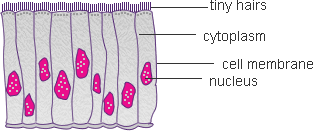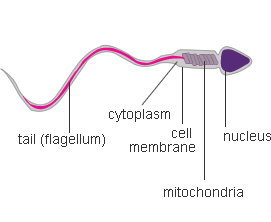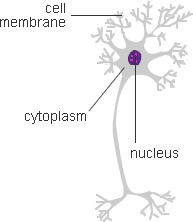This topic takes on average 25 minutes to read.
There are a number of interactive features in this resource:
 Chemistry
Chemistry
 Biology
Biology
 Human biology
Human biology
 PSHE / Citizenship studies
PSHE / Citizenship studies
Remember: 1 millionth of a metre (m) is 1 micrometre (μm).
Humans are multicellular organisms. That means they are made up of billions of individual cells. These cells are not all the same. There are many different cell types that are specialised to perform the range of functions needed in a complex organism.
As new cells grow and replicate, they become specialised to do particular jobs. Nerve cells that carry electrical signals, muscle cells which generate force and pancreas cells making insulin are just a few examples. Amazingly, all of these cells have grown from just one single fertilised egg cell.

Cells like these line the windpipe or trachea. The cell membrane is folded into tiny hairs which can move and push dust particles out of the lungs.
Many types of cancer, including those of the stomach, lung, skin and bowel, start off in epithelial cells. These cells line your organs and tissues and are exposed to environmental influences which, over time, can cause cancer to arise. For example smoking and lung cancer, ultraviolet radiation and skin cancer.


Substances can cross the cell membrane by diffusion, osmosis and active transport. Use the animation to see how each of them works.